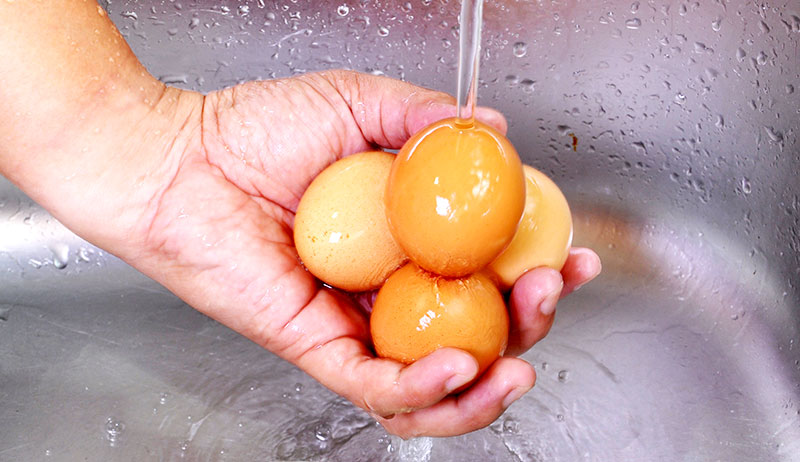
I often receive special requests from my egg customers. One buys only the sky-blue eggs from my Ameraucanas. Another likes it when the eggs in her carton evenly alternate between blue and brown. Several ask me to surprise them with an occasional duck or turkey egg.
Still others trust me to pack up whatever is freshest. Recently, however, I received a request I’d never heard: “Could you please leave my eggs dirty?”
The customer, Patti, has bought eggs from us for years, so her question was unexpected—and yet, it was not. Patti comes from Ireland, where (like other places outside the U.S.) eggs are sold unwashed, just as the hen laid them.
The U.S. Food and Drug Administration requires all commercial eggs to be sanitized for sale. But egg farmers who sell directly to buyers are not required to clean their eggs. Just the same, most of us do, mainly because it can be off-putting for customers to get product mottled with muck.
But Patti wanted the muck and more. “Bring on the poop!” she declared. “Leave the eggs the way they are! That’s how they are back home, that’s how I want them.”
Her lilting proclamation intrigued several clients picking up eggs. I quickly explained that unwashed eggs retain their protective bloom and that it’s this bloom, or cuticle, that prevents bacteria from entering the egg and helps keep refrigerated eggs from absorbing strong odors from nearby foods.
That’s all it took. Suddenly customers were asking me for unwashed eggs—and requesting safe ways to clean fresh eggs for use. To cover that last point, here are four ways to clean fresh eggs, in case you prefer yours direct from the nestbox, too.
1. Sanding

To remove dried droppings and other caked-on detritus, use a very fine sanding sponge or sandpaper with a 80 to 120 grit. Go easy on the pressure. Use only enough to sand down the dirty spots. If you plan to sand many eggs, wear a protective mask to prevent you from inhaling the poultry dust. Sand eggs away from other food or open beverages. Use a Shop Vac or other high-powered vacuum to remove the dust from surfaces.
2. Scrubbing
Scrubbing works well on eggs that have minimal muck on the shell. A soft, used toothbrush applied with gentle pressure should remove any buildup. As with sanding the debris away, make sure you scrub your eggs far away from any cooking or eating surface. Clearly mark the toothbrush so that it does not get mistakenly used for another purpose.
3. Wiping
When the filth on the eggshell is still fresh, your best bet is to wipe it off. Sanding and scrubbing won’t on moist grime; furthermore, the muck will fully contaminate your scrubbing brush. Use a paper towel or soft, disposable cloth just barely moistened with water and lightly wipe the stains off, taking care not to smear the muck onto the clean parts of the eggshell. Use a second paper towel to absorb any excess moisture left on the egg. Be aware that by wiping the egg, you will remove the bloom, so refrigeration will be necessary.
4. Washing

If you plan to wash your eggs, do so only immediately before you plan to use them. Make certain the water you use is at least 20 degrees F warmer than the egg itself. Water that is the same temperature as the egg or colder can cause the contents of the egg to contract, pulling bacteria in through the shell’s pores. If you wish, you can use a scent- and dye-free dishwashing liquid, but plain water is fine and less apt to leave behind a soapy aftertaste. Dry the eggs thoroughly before storing them in the refrigerator, and use them soon. Washing removes the bloom, making the shells porous, open to bacterial contamination and shortening the shelf life.
When an Egg Is Too Dirty
Sometimes fresh eggs end up simply too filthy to clean. Mud, feces, blood, even the contents of a broken egg can coat an eggshell. Do not risk the possibility of contamination. Instead, throw these dirty eggs away or compost them. A general rule is “Covered with muck? Don’t press your luck.”




